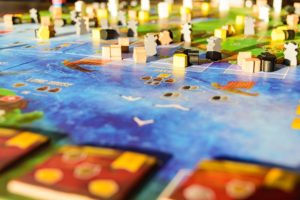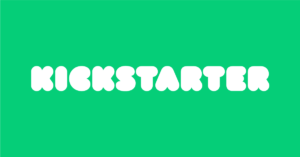Tabletop games have a long history of flourishing on Kickstarter, with over 26,000 board game projects launched on the platform through the years.
If you have an idea for a tabletop game and are looking for a step-by-step guide to go about bringing the project to life, you’ve come to the right place.
In this article, we’re giving you a detailed look at each step you will need to take to successfully launch your tabletop on crowdfunding platforms like Kickstarter.
Ready to discover how you can bring your game to life?
Let’s dive in!
1. Do Your Research
When it comes to launching any Kickstarter campaign, learning from successful campaigns in your niche that have come before you can give you a huge leg up.
This is especially true for tabletop games, as marketing strategies are so unique.
You should browse and study some of the highest funded tabletop games on Kickstarter to get an idea of what your campaign page should look like.
How have these projects structured their pitch video?
What sorts of rewards and perks are they offering?
How have they structured their campaign text, images, graphics, etc.?
By gathering an understanding of best practices through research, you won’t have to reinvent the wheel. Copy what works—there is no shame in imitation when it comes to Kickstarter campaigns!
2. Experiment With Gameplay
While your tabletop game might sound really awesome in your head, there are always going to be unexpected kinks to work out.
Before you bring your campaign to a platform like Kickstarter, you want it to be thoroughly vetted for potential issues or improvements.
By using dummy cards and game pieces to experiment with gameplay, you can get feedback on how to fine-tune the rules or gameplay options.
Playtest as much as you can. Try finding different people to play the game, from board game junkies to casual players to those who don’t have much experience with tabletops.
Getting feedback from as many people as possible will allow you to better see the big picture of your game.
In this early stage, don’t get too caught up in the rules!
Get out some pieces of scratch paper, loose change, and a first draft of rules to get started. From there, the invention and tinkering can really begin.
3. Consider Artwork
Outstanding artwork can set your board game apart.
Art brings your game to life and gives the tabletop its own unique personality and style. From branding to gameplay to aesthetic implications, the artwork will have a huge influence on the vibe of your game.
Browse artists on Instagram and other social platforms to get an idea of what kind of art might go best with the plot or personality of your game.
If you like an artist, don’t reach out just yet.
Take a couple of days (or even weeks) to browse artists. As they catch your eye, put them in a spreadsheet for later consideration.
As you return to artists’ work, you might find yourself especially provoked or not as interested.
4. Get Artist Quotes & Build Budget
Once you have shortlisted all potential artists (usually 3-5 is a good target number), it’s time to reach out for quotes.
From here, you can weigh whether it might be better for you to go with a value-driven up-and-coming artist for a cheaper price, or hire someone more experienced for a little bit more money.
You should come to the artist prepared with exactly how much work you will need to be done.
- How many cards will they need to produce?
- Do you need cover art or additional components?
- What style would you like them to work in?
Coming to the table (no pun intended) with these considerations for your tabletop game art will expedite the process and attract better artists.
Keep in mind that paying your artist is just one component of your budget.
At this stage in the process, you should be garnering a better understanding of what the game will cost as a whole.
Define your budget with the following considerations in mind:
- Artist fees
- Marketing
- Manufacturing
This budget will be important when you determine your Kickstarter funding goal. Remember that there will always be unexpected expenses in every stage of the process—so make sure to account for them!
5. Find a Game Producer
Once you’ve got the concept, rules, and artwork taken care of, it’s time to actually determine how to manufacture your tabletop game.
Your game will likely require physical pieces and cards for gameplay.
Producers like The Game Crafter and Board Games Maker specialize in the production of these materials and can bring your concept into a reality.
You should record all of these costs in a spreadsheet. Don’t leave even the most minute of expenses out of the equation—as you look to scale your game, every cost matters.
6. Make Some Prototypes
You don’t want to jump the gun and launch your Kickstarter campaign just yet—there might still be some tweaks that show up as your game is played in its truest form.
Produce some prototypes of your game and show them off at exhibitions and events.
There are many different kinds of these conventions, some of which are small, intimate gatherings. Others are weeklong events with large dealer halls and tons of activities.
Showing off your prototypes at these events can get you footage for your Kickstarter video, give you the last round of feedback before mass production, and create excitement around your game.
Use this opportunity to network with gaming influencers that might promote your game. If people like it, they’ll talk about it on their social platforms.
7. Launch Your Kickstarter Campaign
Now that you’ve put in all the work in developing the concept of your game, it’s time to launch your Kickstarter campaign.
This is an intensive process, but it can really pay off. Kickstarter has an extremely large community of backers who are looking to support tabletop games like yours!
You’ll have to do the following:
- Market your upcoming campaign with a dedicated pre-launch strategy.
- Build your campaign page, including a killer Kickstarter video.
- Design compelling perks and rewards to convert browsers into backers.
- Manufacture and fulfill promised rewards to backers.
- Build a great marketing strategy to keep funding pouring into your campaign.
Seem a little bit overwhelming?
Especially for first-time creators, launching a crowdfunding campaign is a lot of work.
You’ll want to have a team around you that you trust so that you can delegate tasks to areas where you lack expertise.
If you’re looking for an expert to help ensure a great launch for your tabletop game, I’m here to help.
I’ve worked with tons of Kickstarter campaigns in my career, and your project could be the latest success story!
Book a free coaching call with me to get started!
I also have a great book: The Kickstarter Launch Formula which goes way more in-depth to deliver you everything you need to know about launching a successful campaign.
Are you ready to launch the next gaming craze?
Now is the moment! Follow these seven steps and consult with me to get started today.










